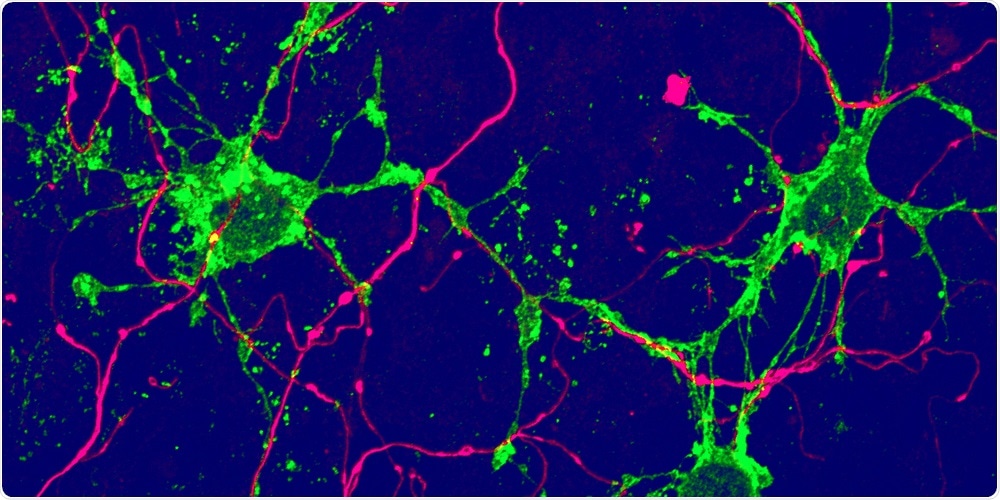Researchers from the University of Basel have discovered two types of glial cells that may play an important role in brain plasticity and repair.

New type of glial cell (green), arising from adult stem cells in the brain, contact nerve cells (magenta). Image Credit: University of Basel, Biozentrum.
Neurons, the nerve cells of the brain, are considered the central players in brain function. However, there is an emerging key role for glia, which have been regarded as supporting cells for a long time. Now, scientists from the University of Basel have discovered two types of glial cells in the brain by releasing adult stem cells from their quiescent state.
The brain is pliable well into adulthood, and this brain plasticity is not simply attributed to the development of new nerve connections. New nerve cells are also generated by stem cells present in the adult brain. Scientists have been investigating the different types of nerve cells for over a century.
Glia is another class of cells found in the brain and is also vital for brain functions. But the significance of glial cells has been underestimated for many years. There is no accurate information available on the number of different types of glial cells, their development, and the roles they play, and this area remains mostly unexplored.
Stem cells—unleashed from quiescence
The researchers, headed by Professor Fiona Doetsch of Biozentrum from the University of Basel, are now studying stem cells in the ventricular-subventricular zone of the adult mouse brain. Most of the stem cells present in the region remain in a quiescent state, sensing environmental signals that induce them to transform into new nerve cells.
According to the study published in the Science journal, the team led by Doetsch detected a molecular signal that stimulated the stem cells from their quiescent state. The signal allows the stem cells to uncover multiple domains giving rise to glial cells in the stem cell reservoir.
Stem cells—the birthplace of glial cells
We found an activation switch for quiescent stem cells. It is a receptor that maintains the stem cells in their resting state. We were able to turn off this switch and thus activate the stem cells.”
Fiona Doetsch, Professor Biozentrum, University of Basel
The researchers were also able to observe the development of the stem cells into different glial cells in certain regions of the stem cell niche.
Some of the stem cells did not develop into neurons, but into two different novel types of glial cells.”
Fiona Doetsch, Professor, Biozentrum, University of Basel
Therefore, the brain region considered in this study is the origin for different types of glial cells as well as its role as a breeding ground for neurons.
What was very unexpected was that one glial cell type was found attached to the surface of the wall of the brain ventricle, rather than in the brain tissue.”
Fiona Doetsch, Professor, Biozentrum, University of Basel
The cells are poised to sense and combe multiple long-range signals as they are continuously bathed by cerebrospinal fluid and communicate with axons from other brain regions.
Glial cells—active in health and disease
The researchers also found that both types of glial cells are stimulated in a demyelination model. Hence, these new glial cell types may serve as a source of cells for repair in neurodegenerative disorders, like multiple sclerosis or post-injury.
As a next step, Doetsch intends to particularly trace these new types of glial cells, explore their roles in normal brain function, and the way they react to different physiological contexts. This will offer significant clues for understanding brain plasticity and the repair and renewal of neural tissues.
Source:
Journal reference:
Delgado, A. C., et al. (2021) Release of stem cells from quiescence reveals gliogenic domains in the adult mouse brain. Science. doi.org/10.1126/science.abg8467.